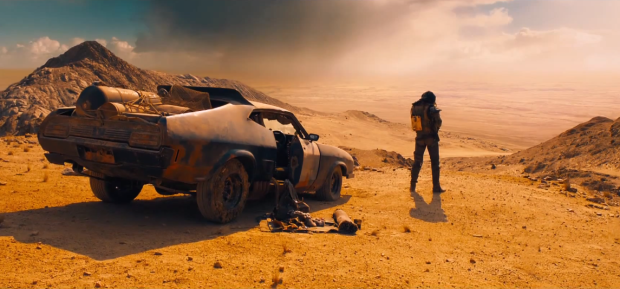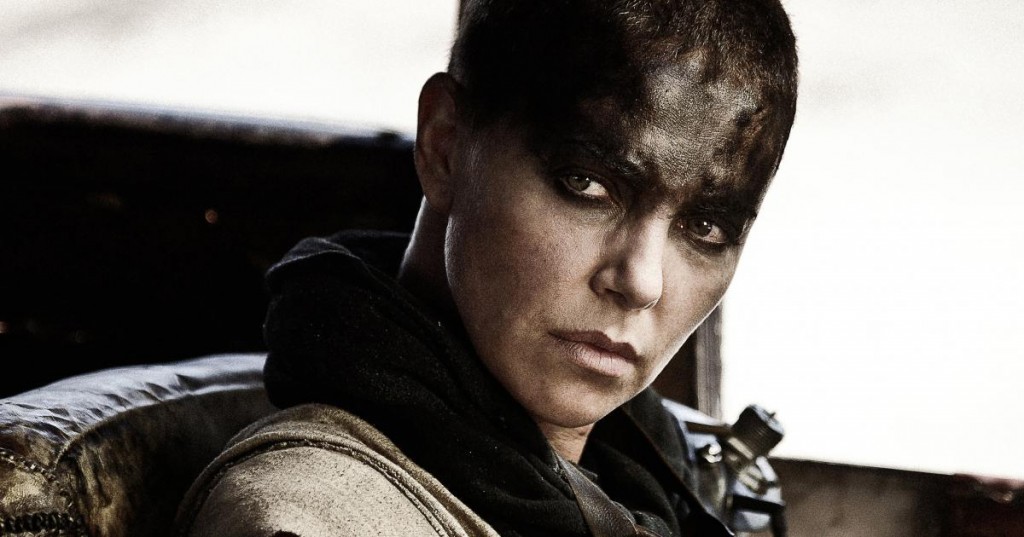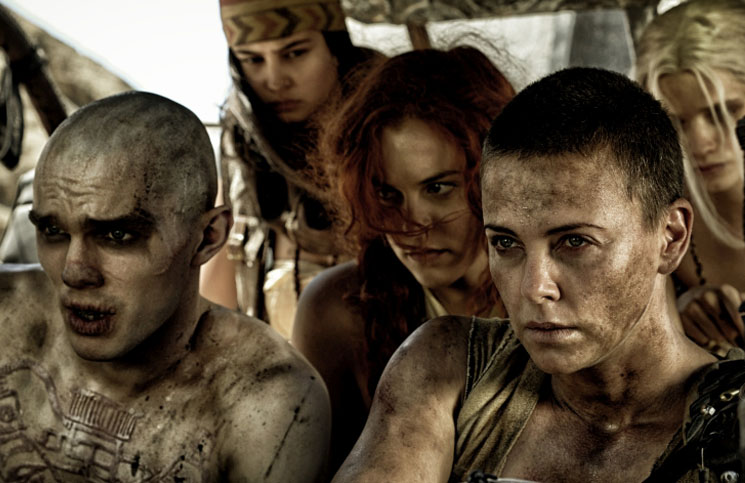Studios like to market action films as “nonstop thrill rides” or “high-octane adventures,” but Mad Max: Fury Road transcends such rote praise. It’s like being fired out of the barrel of a sawed-off shotgun and piercing rusty debris along the way to a messy kill; a Pyrrhic victory at the end of an excruciating journey. “Exhilarating” is an understatement. No other film in recent memory has managed to deliver on the basic premise of big budget action with such execution or elan, but it’s more than just explosions and bloody vengeance.
If you’ve never seen George Miller’s Mad Max films, they’re not a prerequisite here. All you need to know is that the world died, leaving sand, death, and pain in its wake. The one thing made implicit in this iteration of Miller’s post-apocalyptic wasteland is the distinct sense that, whatever the specifics of this particular Armageddon, the men are surely to blame. The entire landscape is littered with gangs and warlords sketched out like a decidedly masculine id brought to life by Moebius. Motherless Warboys, sickly and pale, ride into assured obsolescence for the glory of Immortan Joe (Hugh Keays-Byrne), their snow-coiffed dude deity, all for the false promise of Valhalla. That the ruling class is built upon the hoarding of water, the rationing of breast milk, and an unhealthy obsession with American muscle cars should tell you everything you need to know about what’s left in the afterbirth of society’s demise.
The film’s narrative is simple. Immortan Joe’s trusted Imperator, Furiosa, steals away with five of his slave wives in a daring exodus masqueraded as a routine gasoline run. Max, having already been captured by the warboys in the film’s prologue and enslaved as one of their “blood bags” (a source of nutrition for the malnourished soldiers), gets caught up in the fray like a leather-clad Toshiro Mifune, aiding the expatriates in their sojourn to a better life.
The Mad Max world’s undeniably attractive Western iconography is flipped here in intriguing ways. Fury Road is the most brutal and explosive movie you’re likely to see anytime soon, but it’s almost gleefully divorced from the typical summer blockbuster and its action figure fantasy elements. The film is still dick deep in the desire to look, feel, and sound as cool as humanly possible, but there’s a brutality there, a world-weariness that purposefully poisons the aesthetics. Over the years, there’s been an unhealthy preoccupation with surviving the apocalypse and becoming the ideal, extreme version of yourself, but this is not that. It’s no wankfest of destruction for trashboys to fantasize themselves the star of. Yes, Tom Hardy’s Mad Max is the first character you see, his voiceover the first thing you hear, but this is not his film. It’s Charlize Theron’s.
Sure, Hardy is a suitably smoldering badass, but he’s barely a hero. Furiosa is the real protagonist. It’s her freedom ride that forms the film’s single, prolonged car chase. Her intensity inspires lifelong concubines to escape their existence as property, even if it risks their survival. Her burning memories of a homeland paradise covered in green offers the only currency more rare than water or gasoline in this world: hope. Max is just riding shotgun for as long as the narrative will have him, a broken, terminally lost soul trying like hell to keep air pumping through his dusty lungs.
Mad Max: Fury Road isn’t quite a silent movie, but it’s as light on dialogue as it is excess fat. The carnage meter never throttles below catastrophe, but there’s a classicism to the storytelling that feels like uncut myth. One might find it “comic book-y” solely based on legendary artist Brendan McCarthy’s involvement, or the screenplay just being a bunch of storyboards; but, at its purest, cinema should be tales told through images.
Every character feels fully realized, even though not much time is set aside to explore each of them as individuals. Joe’s wives could stand to be more distinct, but they are never treated as extras or incidental. Max’s backstory is relegated to smash-cut mirages, while Furiosa’s is extrapolated from a few line deliveries. Perhaps in today’s climate someone might leave Fury Road hungering for a Netflix series or comic book spin-offs of the supporting cast’s respective backstories, but what’s so impressive is how much is implied just from the artfully curated snapshots glimpsed between trucks flipping over and oil rigs bursting into flame. There’s no time for flashbacks or rumination. Everything happens in the sky-burning now.
In a weird twist, one of the Warboys, played by Nicolas Hoult, transforms into the beating heart of the picture. One of the wives makes the distinction that he and all of his psychopathic comrades are really just boys, all raised in a cave by a megalomaniac. From the moment he experiences even a shred of human compassion, his allegiances shift, and he gives up trying to die for some bullshit afterlife and tries to do right by his fellow (wo)man. It’s a moment that might elicit eyerolls but, coupled with other telltale signs of toxic masculinity as the palpable manifestation of world death, feels progressive for a film otherwise powered by blowing shit up in a desert.
Fury Road seems aimed at dudes who fetishize chrome and steel, but Miller plants seeds of bolder, more incendiary ideas within the bro-fantasy. It’s the kind of movie you can just sense Josh Homme furiously masturbating to on the periphery of the frame, but, curiously, one I’d love to take my little sisters to. In a climate where we’re all arguing about Joss Whedon and “strong female characters,” George Miller has hidden a welcome alternative inside his bombastic comeback film.
Mad Max: Fury Road opens this Friday in wide release.




